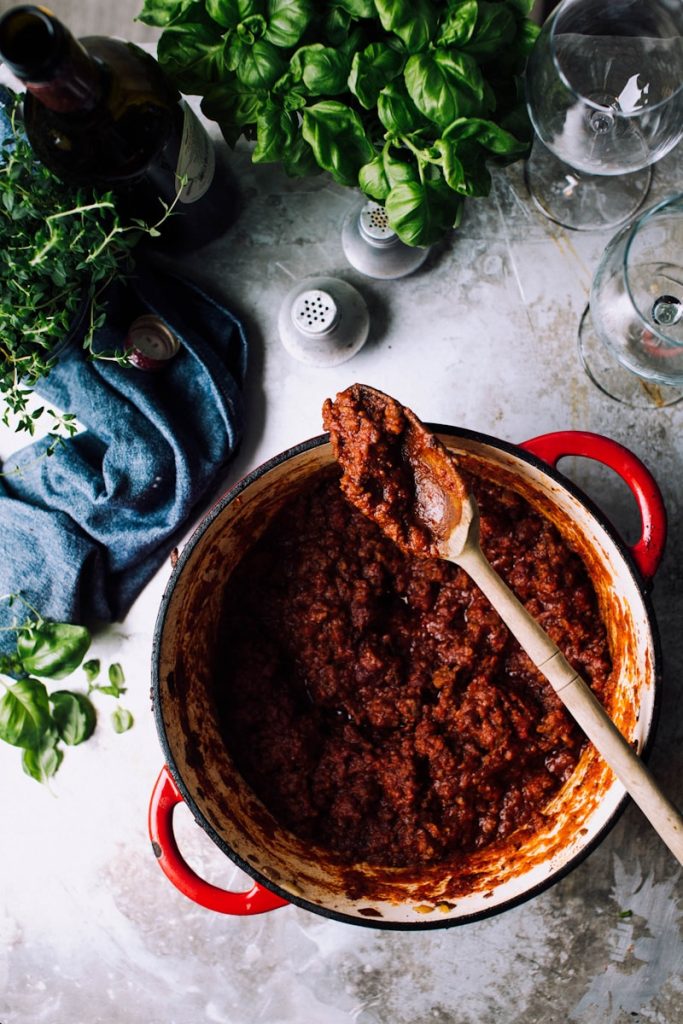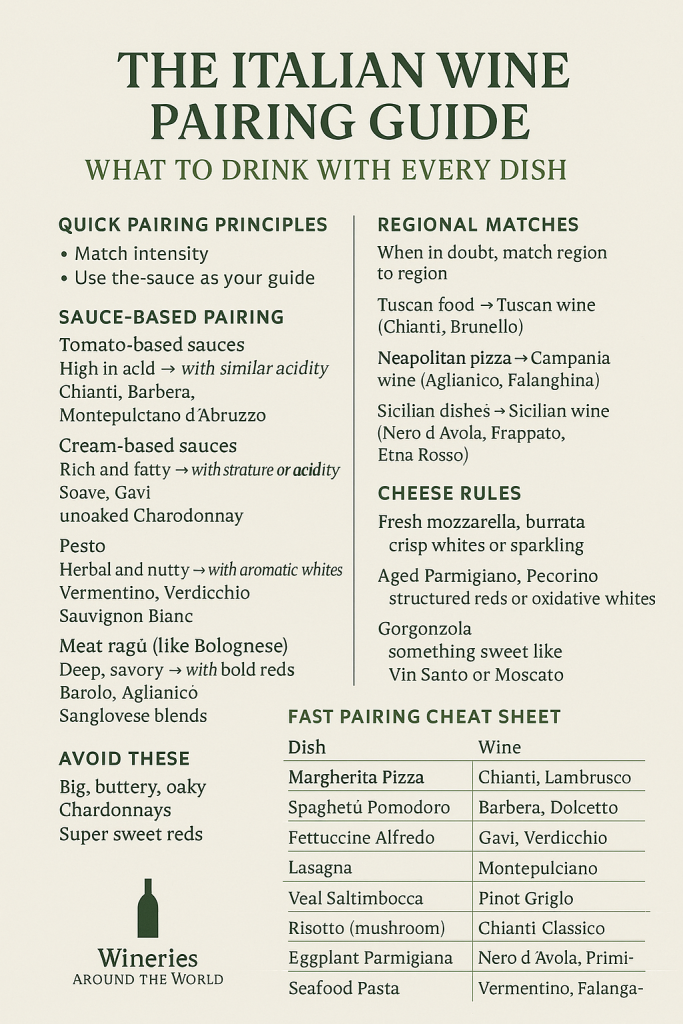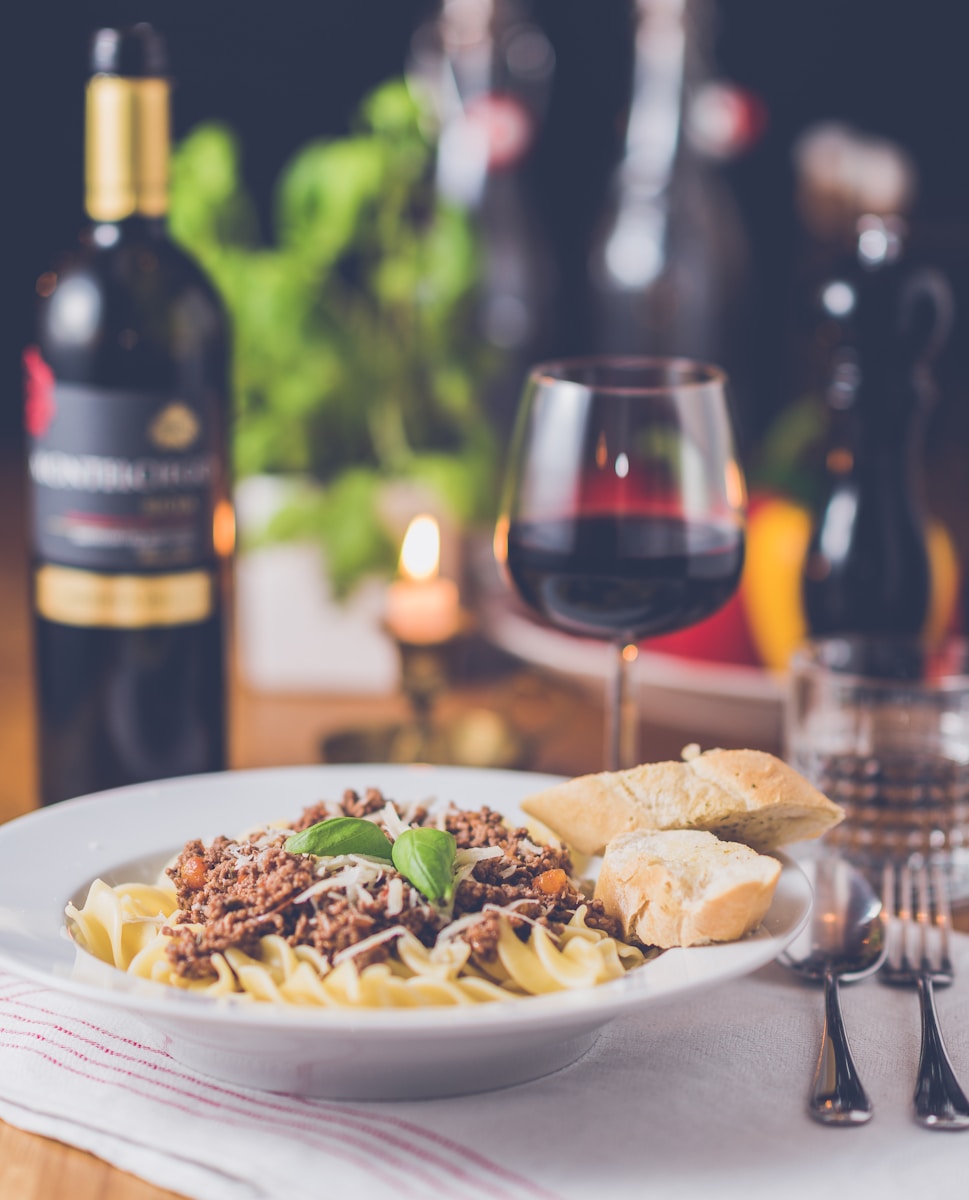Wine Pairing with Italian Food Is the Date Night You’ve Been Missing
Dinner is not just dinner when the wine actually works with the food. For couples looking to slow down, connect, and enjoy something thoughtful together, wine pairing with Italian food is one of the easiest and most rewarding ways to do it.
You do not need to memorize wine theory. You just need a little interest and the willingness to try something outside the usual grocery store bottle.
Italian wine is made for the table. It was never meant to be isolated in tastings or pulled apart by tasting notes. These wines exist because someone needed something to drink with Sunday sauce or grilled lamb. That’s what makes pairing in this tradition feel so natural.
There is no need to get fancy. There is a need to get it right. Because when the acidity in a Barbera cuts through a rich tomato sauce, you taste the dish the way it was meant to be eaten. That’s not hype. That’s design.
Try these simple reasons to make this your next date night plan
- It forces you to slow down and talk
- You get to experiment together
- It makes food taste better without needing a professional kitchen
- You can bring the feeling of a vacation to your own table
- It’s inexpensive compared to going out, but still feels elevated
Action steps
- Choose one dish and one wine from the same region
- Use a pairing guide or local wine shop to help
- Schedule a night with no phones and no multitasking
- Cook together or order from a place that lists the region of the dish
Follow the Sauce, Not the Bottle

The key to pairing wine with Italian food is simple. Use the sauce as your guide. Not the protein, not the region name, and not the wine’s label.
Italy’s food culture is rooted in regional ingredients. That means most wines were made to go with the most common sauces from that area. Understanding this will save you from bad pairings and wasted bottles.
Tomato-based sauces are acidic. They need wines that can handle that. Rich sauces with cream or cheese want something that can clean the palate. Herb sauces need aromatics, not weight. It is not about red with meat and white with fish. It is about matching the weight and acidity of the sauce with the right wine.
Pair these sauces with the right wines
- Tomato-based (pomodoro, arrabbiata, marinara) → Chianti, Barbera, Montepulciano
- Creamy or cheesy (alfredo, four cheese) → Soave, Gavi, unoaked Chardonnay
- Pesto or herbal sauces → Vermentino, Verdicchio, Sauvignon Blanc
- Meat ragù (Bolognese, wild boar) → Barolo, Aglianico, Sangiovese blends
- Seafood in olive oil or lemon → Falanghina, Etna Bianco, Vermentino
Try this next
- Make a menu based on one sauce
- Choose one or two wines that fit and taste both with dinner
- Take notes on what worked and why
- Use that insight for future meals or travel plans

Keep the Experience Centered on the Table
Pairing wine and food is not a solo act. It’s best when shared. The table becomes the center, and everything else fades into the background.
Couples who create rituals like this build in space to connect without needing a big reason or a big budget. This is not about planning something extravagant. This is about opening a bottle, plating a dish, and paying attention to how it all comes together.
Think of it like a test kitchen. You both get to observe what happens when you bring the right wine to the right dish. You get to learn each other’s preferences. Maybe one of you loves high-acid reds, while the other prefers mineral whites. That information carries over to future meals, wine buys, and yes, vacations.
Create the right environment
- Set the table and dim the lights
- Play a short playlist and stay off screens
- Serve each course with a different wine, if possible
- Ask each other what they notice with each sip and bite
Ways to stay consistent
- Make one night a week your food and wine night
- Keep a simple notebook of what you try and what you liked
- Use your pairings to plan your next travel destination
- Visit a wine store together once a month with a goal in mind
Wrap It All Into Something That Lasts
The goal is not to become wine experts. The goal is to make food and wine something you share, not something you rush. These moments build a rhythm. They add structure to otherwise busy weeks.
As you learn to pair better, you begin to expect more from your meals. That awareness makes dinner at home better, and it makes future trips to Italy more meaningful.
You are not just drinking wine. You are learning what makes it sing with the right food. You are tasting how acidity, body, and aroma all interact with texture, fat, and salt. You are building a shared skill set that is fun, useful, and delicious.
Keep the practice going with these ideas
- Subscribe to a wine box with Italian bottles and suggested pairings
- Try recipes from one region each month, paired with its wines
- Build a map together of where the wine is from and how it tasted
- Set a shared goal to visit one wine region within the year
What Happens Next
Start with one dinner. One good bottle. One solid pairing. Then keep going.
Keep the focus on enjoying each other and the meal. Let the wine support the experience. Let the conversation flow as easily as the pour. And remember, the best pairings are the ones you discover together.
Your table is already the destination. Everything else is a bonus.

